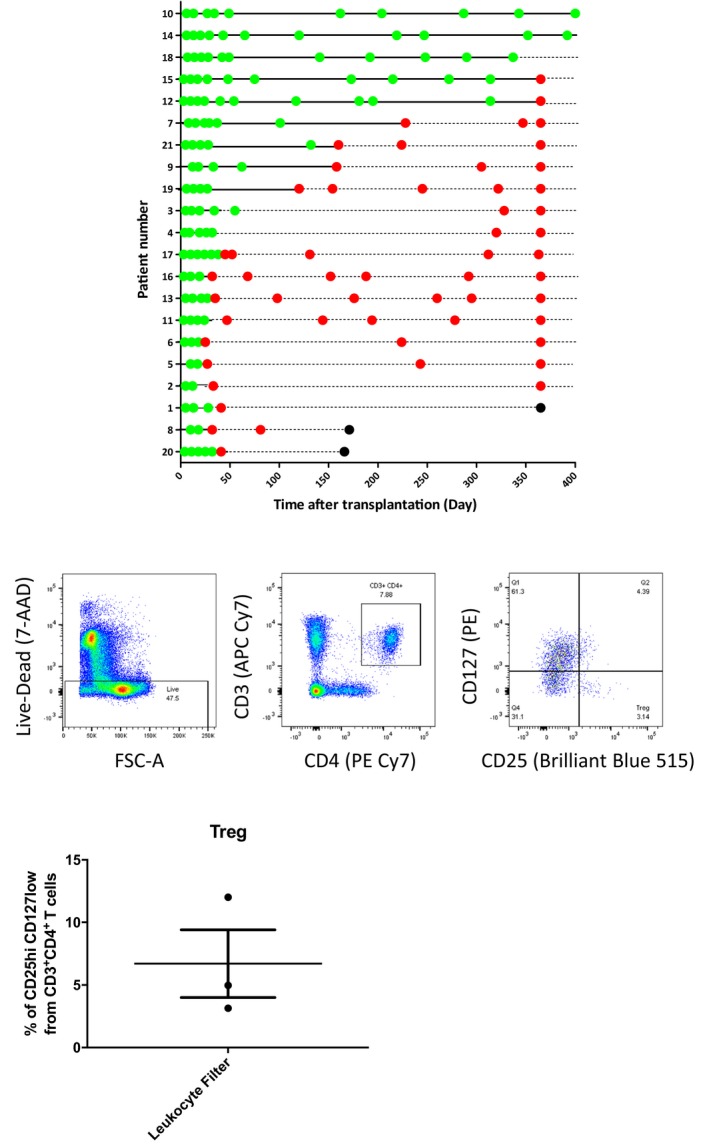Figure 1.

Solid organ human transplants contain passenger CD4 T lymphocyte subsets. A, Donor HLA class I mismatched antigens were used as a target for detection of donor CD4 T cell chimerism in lung transplant recipients using flow cytometry. Three patterns of donor CD4 T cell chimerism were observed: short‐term chimerism (donor CD4 T cells detectable for up to six weeks after transplantation [patients 20, 8, 1, 2, 5, 6, 11, 13, 16, 17, 3, 4 and 19]); intermediate‐term chimerism (donor CD4 T cells detectable up to 6 months after transplantation [patients 9, 21 and 7]), and long‐term chimerism (donor CD4 T cells detectable for longer than one year after transplantation [patients 12, 15, 18, 14 and 10]). Green dot, blood sample tested and donor CD4 T cells detected. Red dot, blood sample tested, donor CD4 T cells not detected. Black dot, patient died. B, Representative flow cytometry plots for analysis of live CD4 T cells recovered from leukocyte filters of human kidney organs undergoing ex vivo normothermic perfusion. Histogram depicts the proportion of CD3+ve CD4+ve T lymphocytes that expressed CD25hiCD127lo T regulatory cell surface phenotype (n = 3)
